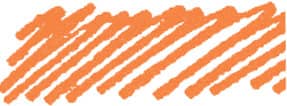 CHAPTER 4
CHAPTER 4 
COLORFUL POP ART
Beagle
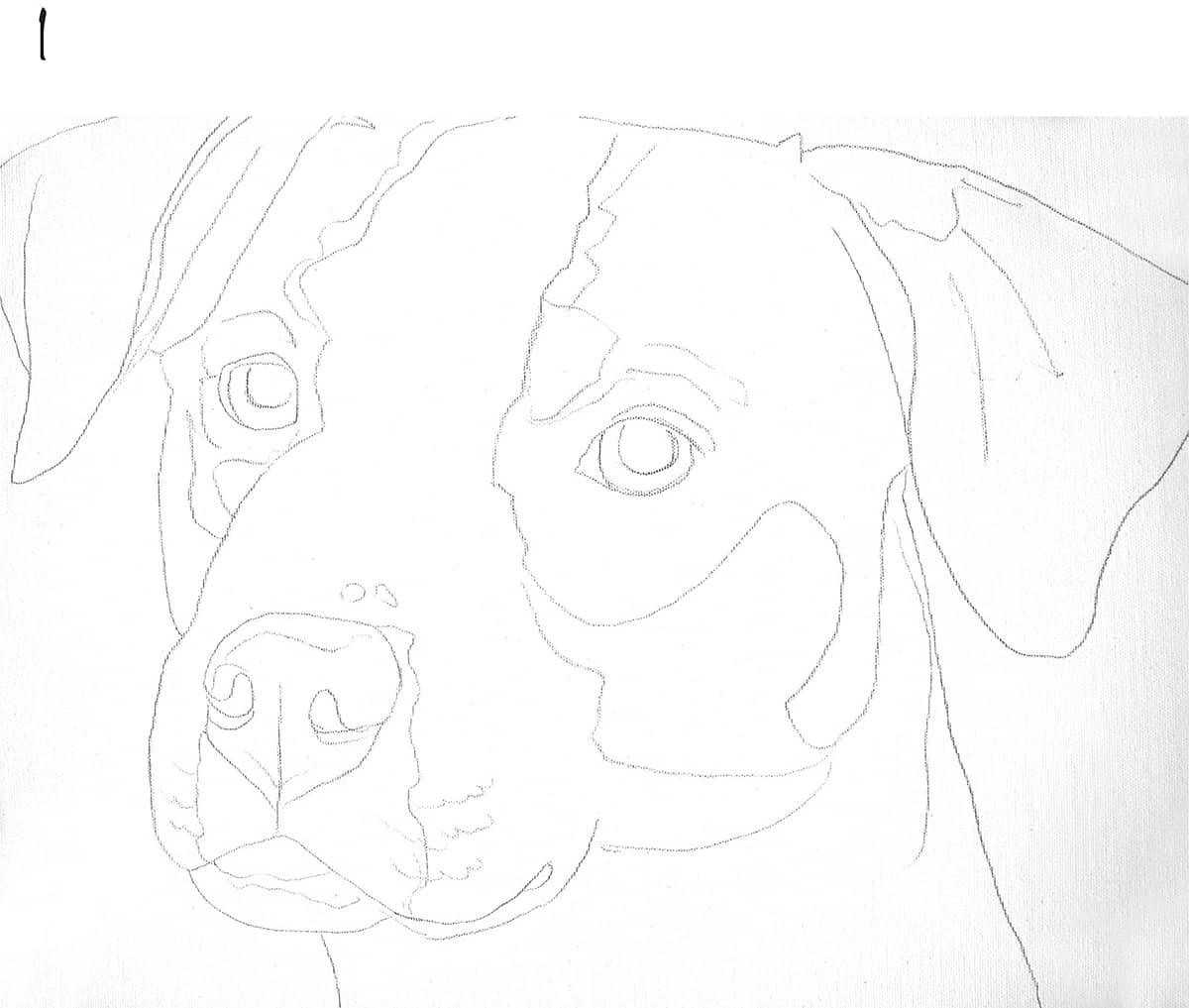
1 Sketch the beagle directly on the canvas, using a reference photo as a value study, if desired.
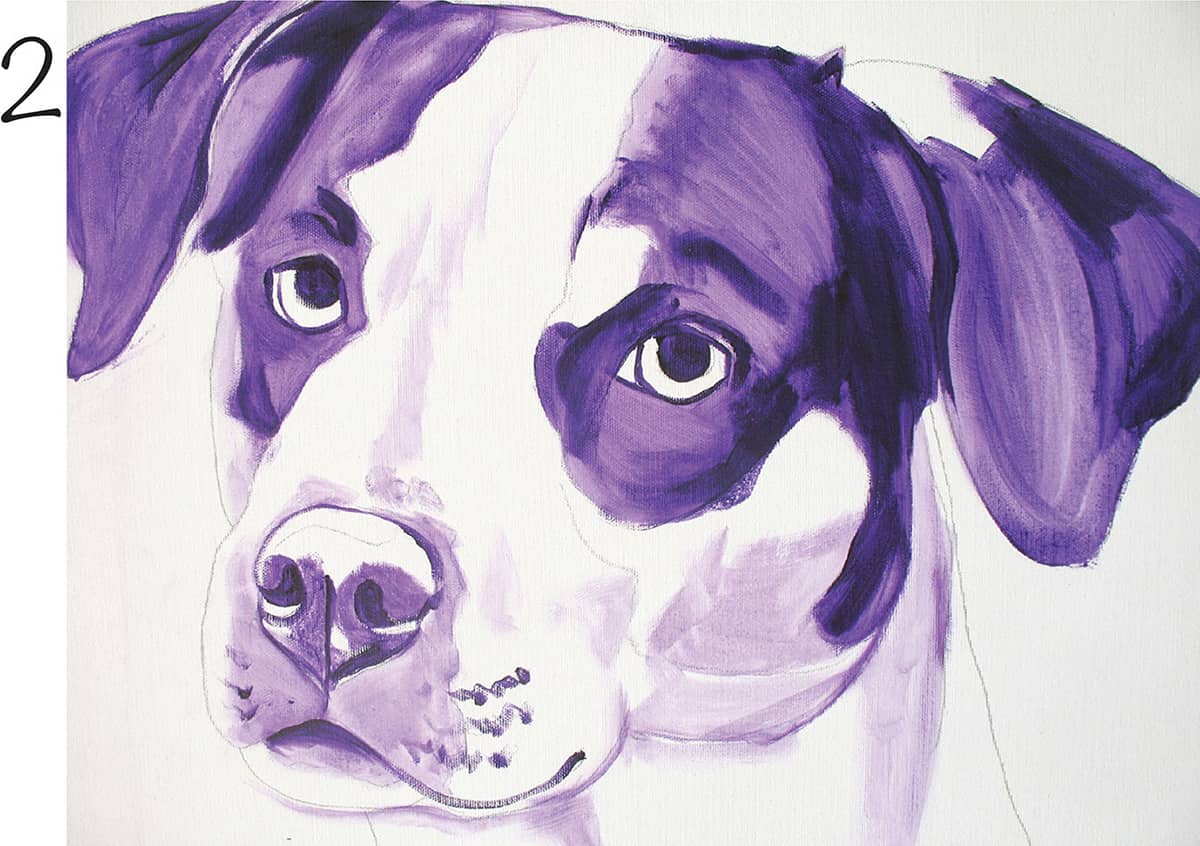
2 Using dioxazine purple, map out the darkest values first. Add paint from the tube directly onto the brush and then dip brush in water. Dab the brush on paper towels to remove excess water. Use big, broad strokes to fill in the appropriate areas of the sketch, and use a smaller brush to define the edges of the eyes, nose, and mouth.
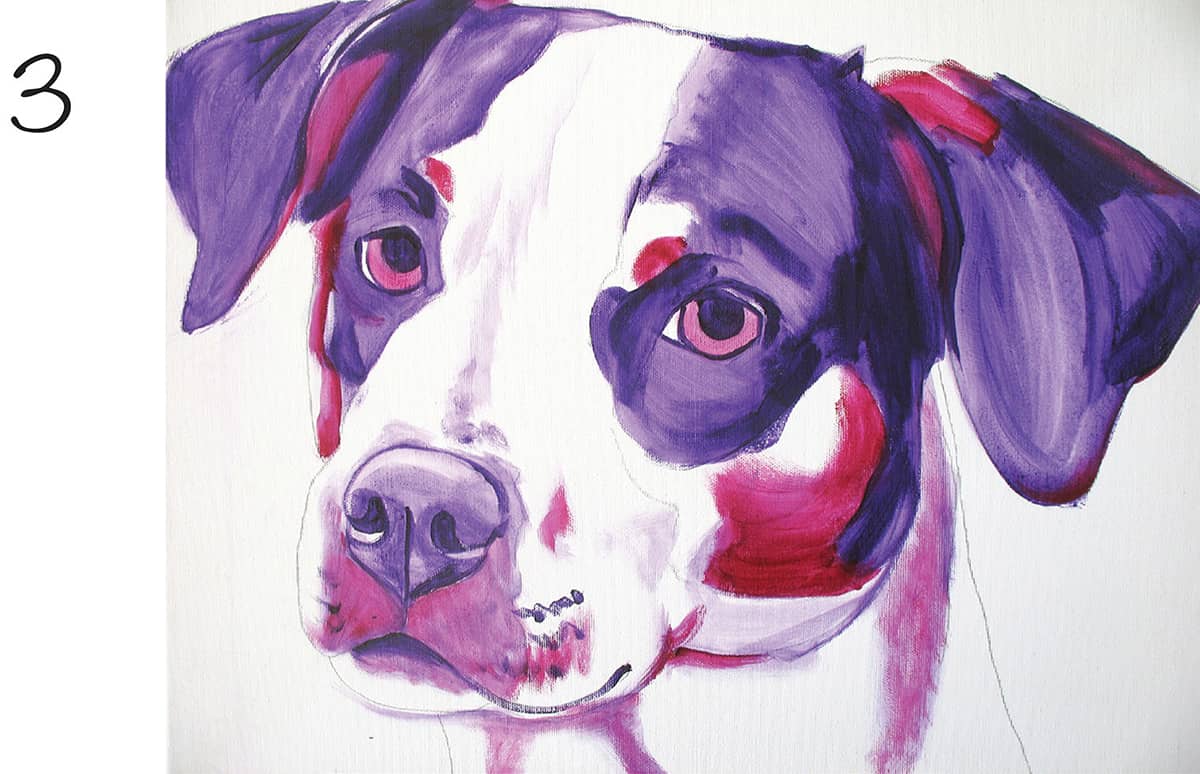
3 Use quinacridone violet to paint in the darkest parts of the reds on the face, the reflected light under the ears, and some of the shapes on the neck. Use thick or thin paint, depending on the value needs. Use this color to begin the eyes, using a thin wash.

4 With cadmium orange, fill in the patches on the face, define the chin, and add shapes on her neck. Use thicker paint for the face patches and keep the brush damp. Paint over the quinacridone violet in the patches; it is quite transparent, so the shadows are visible. Define the white fur with powder blue, still working loosely. Use powder blue to begin the highlights on the nose, eyebrows, chin, and lip.
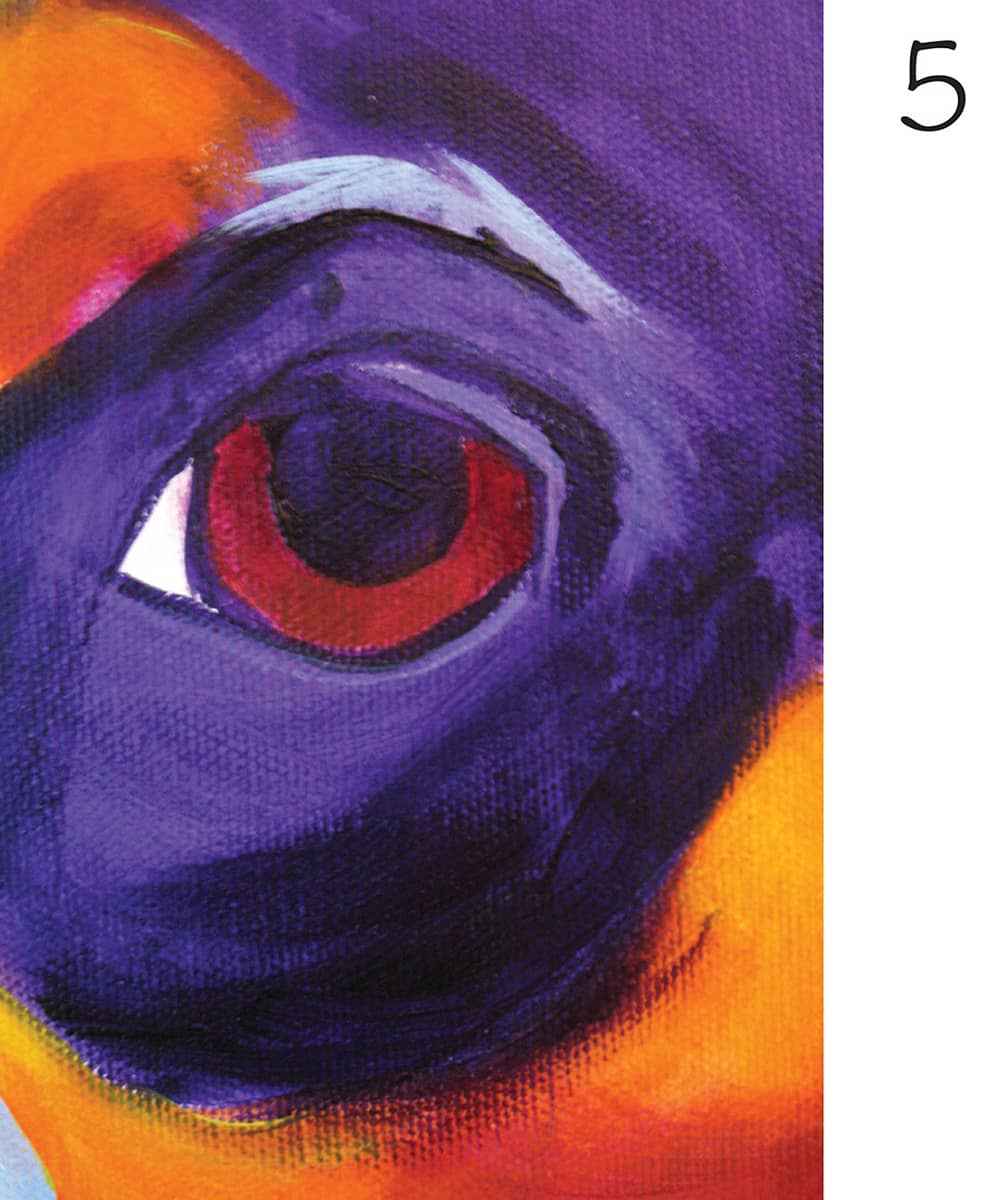
5 Use the #2 bright with burnt sienna to make the eyes more opaque; add quinacridone violet in the top corners.

6 Use cadmium yellow light to add some interest on the nose, muzzle, and neck. Use this yellow to highlight the orange patches; then add more layers to the darks, creating more opacity. Go over the nose and muzzle again with dioxazine purple.
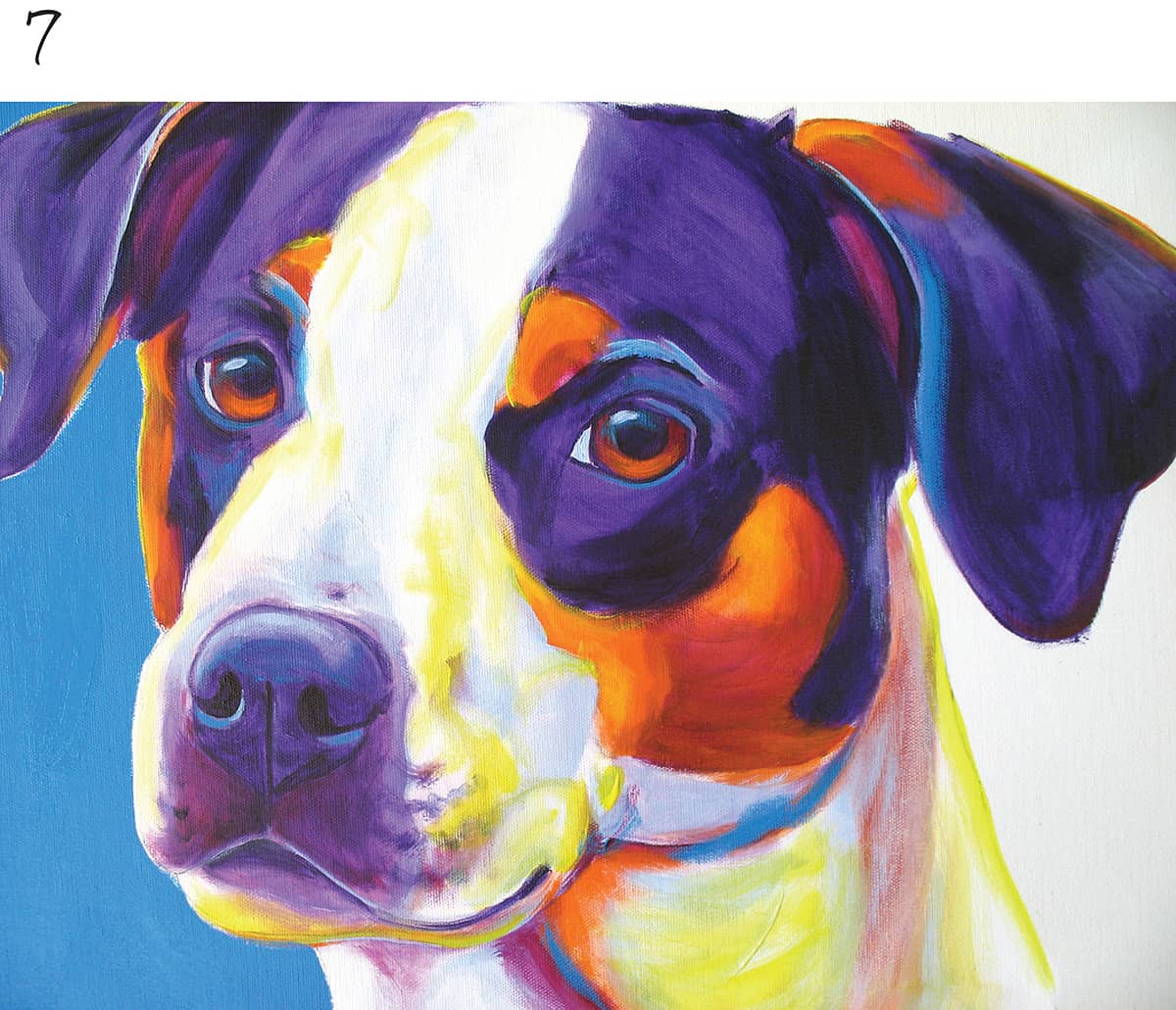
7 Apply cadmium orange to the bottoms of the eyes to create depth. Then brush brilliant blue over the eyelids to define the lighter portions of the lids and brows. Paint the whites of the eyes and add highlights with powder blue. Add definition to the nose, accents on the edge of the ear, and highlights in the dark fur with brilliant blue. Paint brilliant blue for the background.
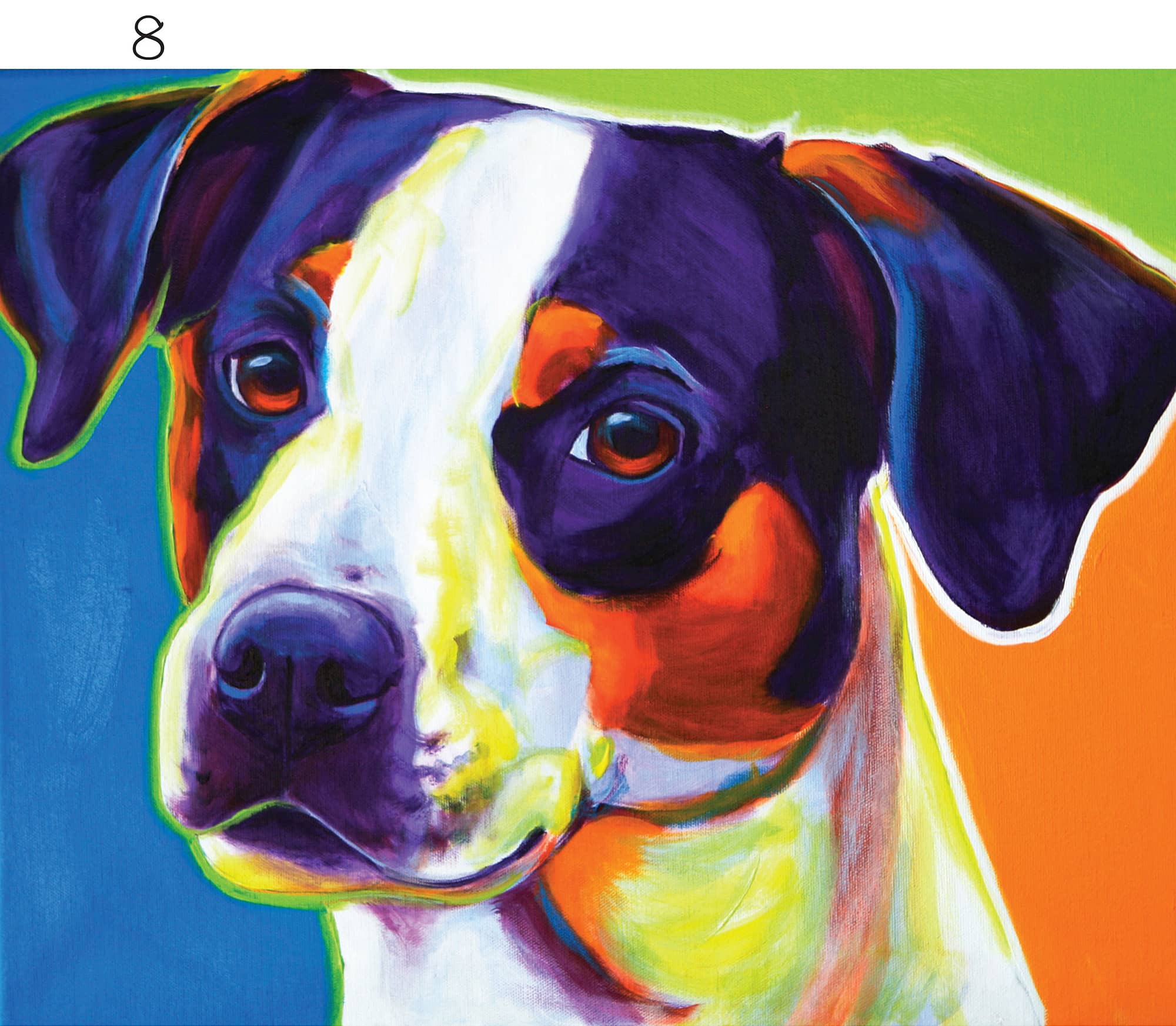
8 Add another layer of highlights, especially on the nose. Finish the background with cadmium yellow deep and brilliant yellow green. Use white to outline one side of the head and green to outline the other.
Labrador
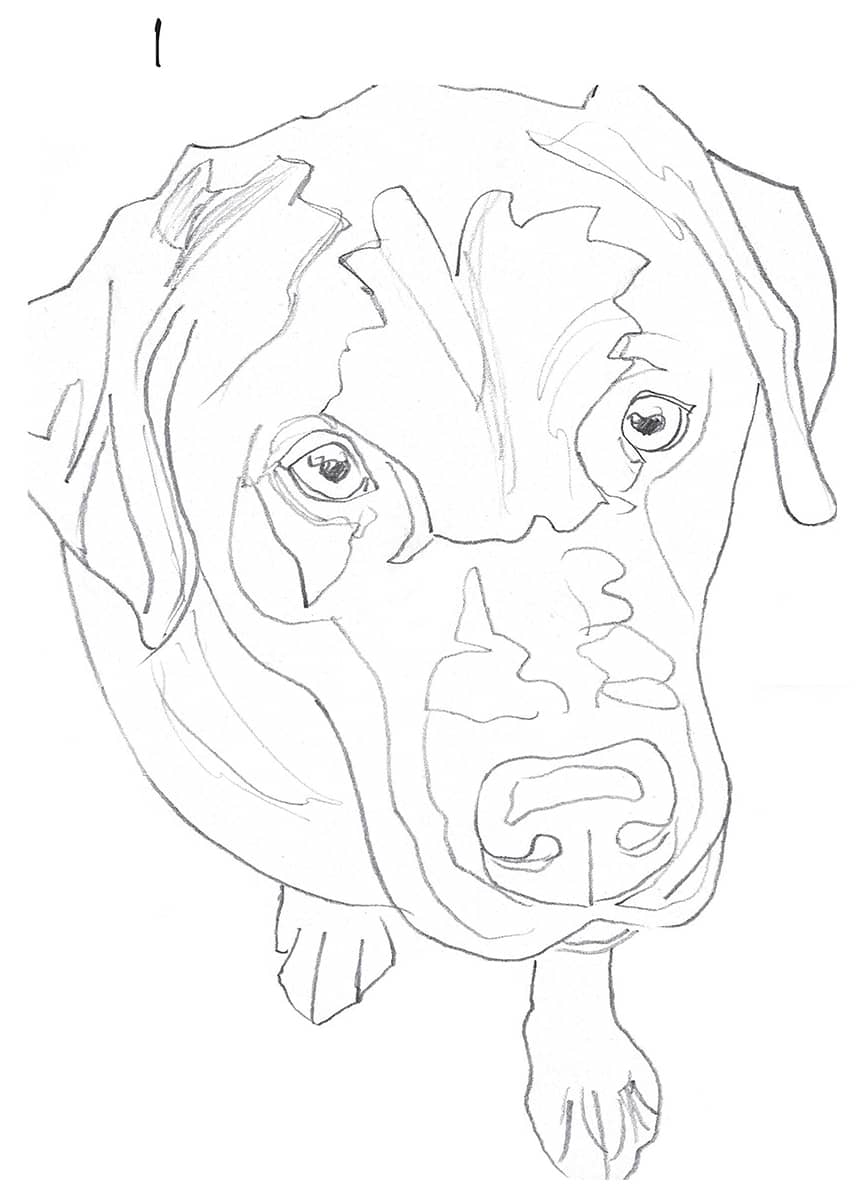
1 Sketch the subject onto the canvas, making the face the dominant feature.
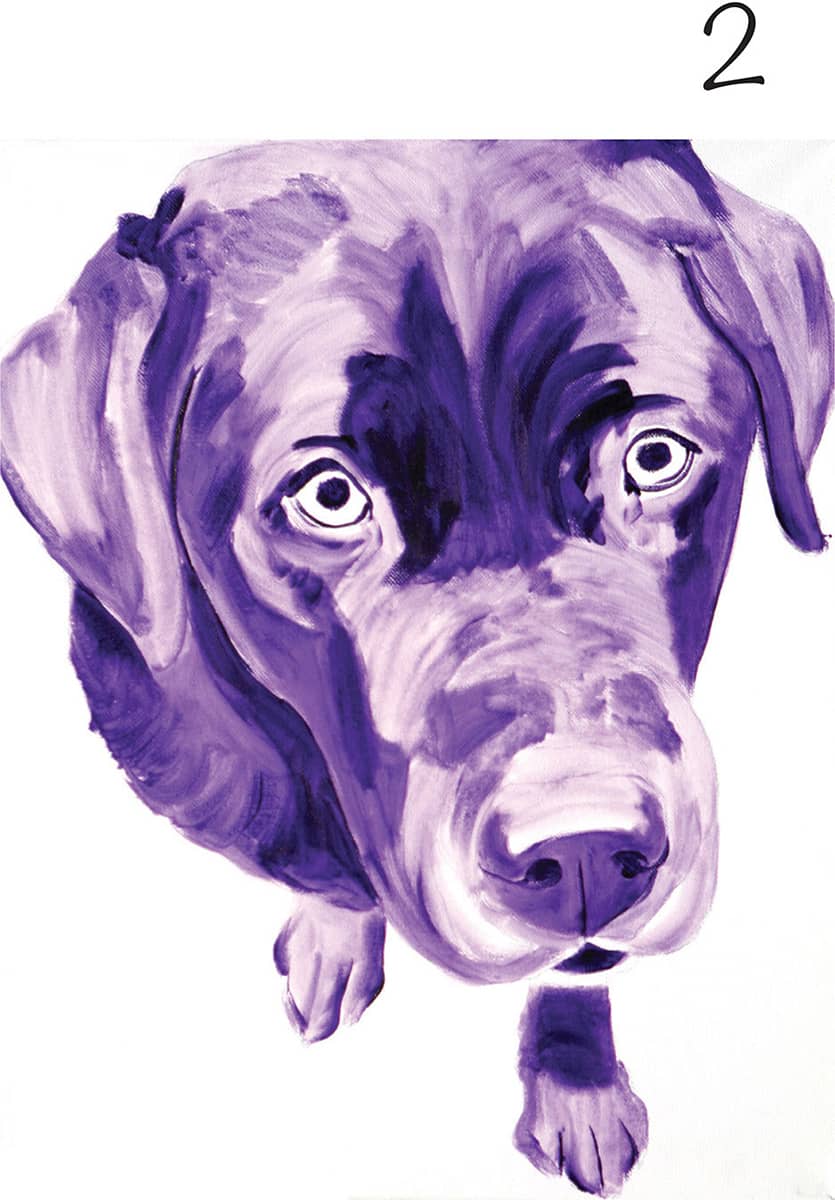
2 Start with dioxazine purple, mapping out the dark and light values. For the midtone values thin the color by adding paint to the brush directly from the tube and then dipping it in the water, draining the excess.
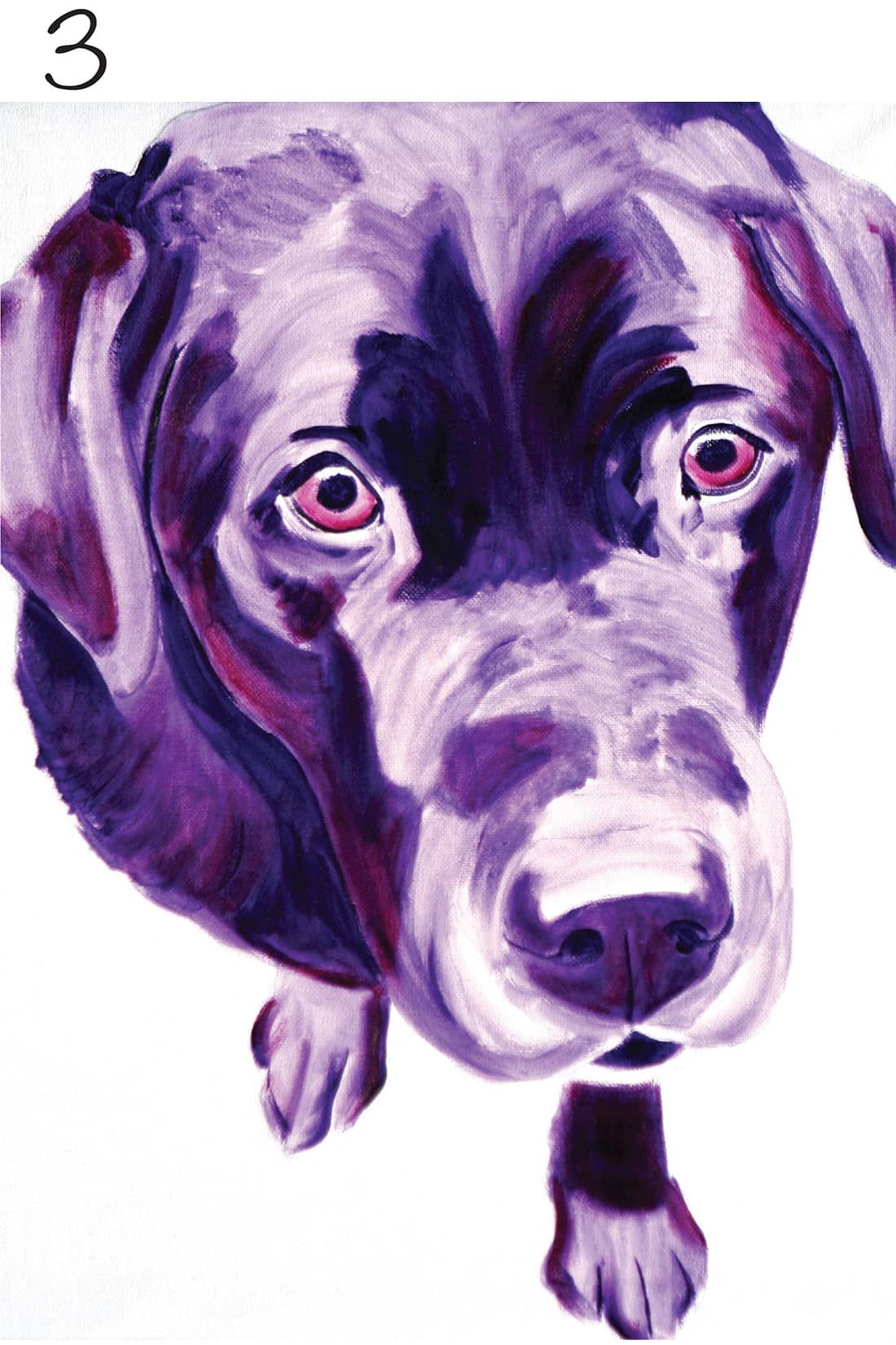
3 Use quinacridone violet to warm the darks, as well as add initial color to the irises of the eyes.
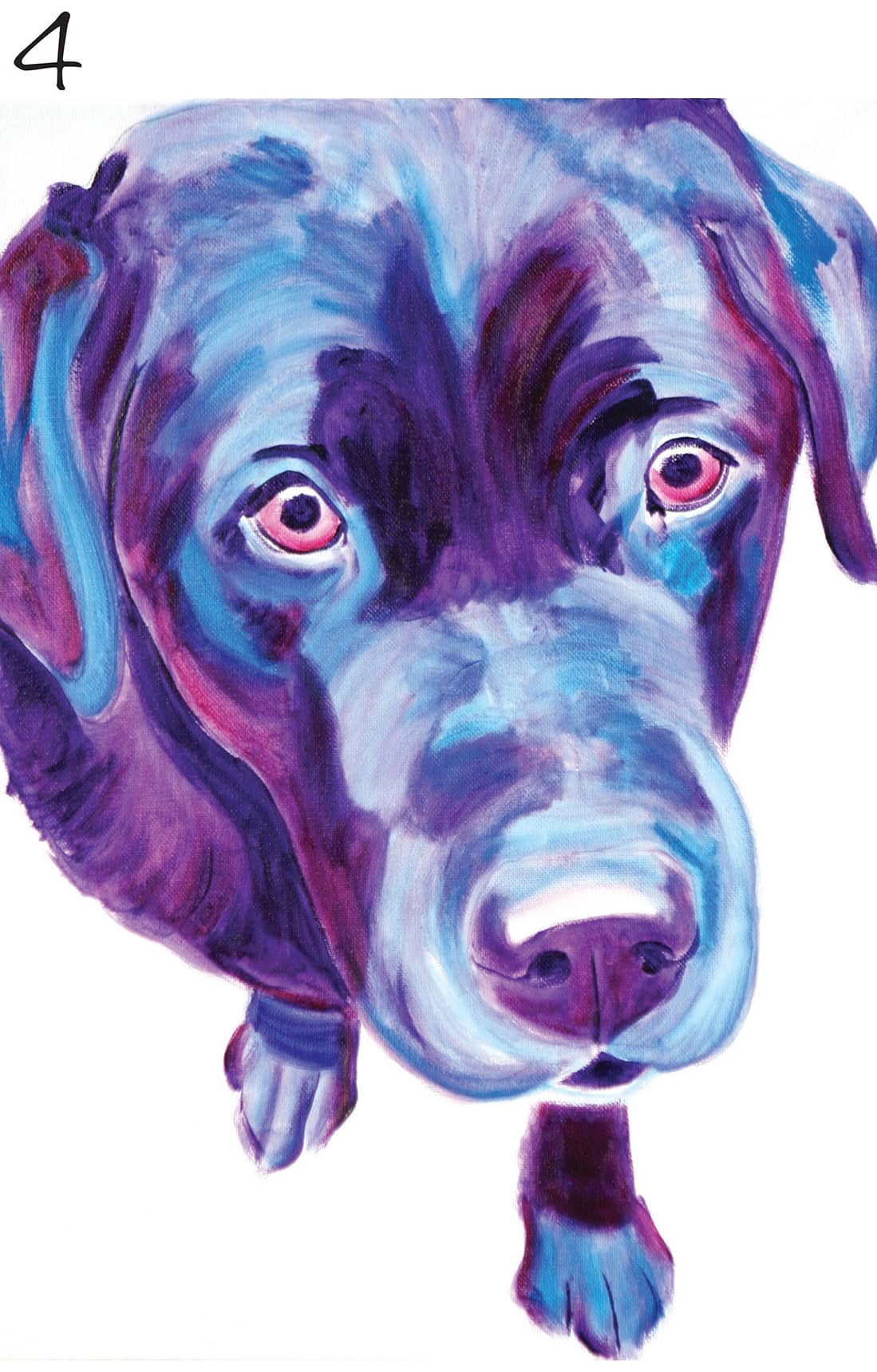
4 Use manganese blue to glaze over the lights in the face, ears, and paws. Thinning the paint with water allows the purple underneath to show through; use more opaque paint for value and color variation.
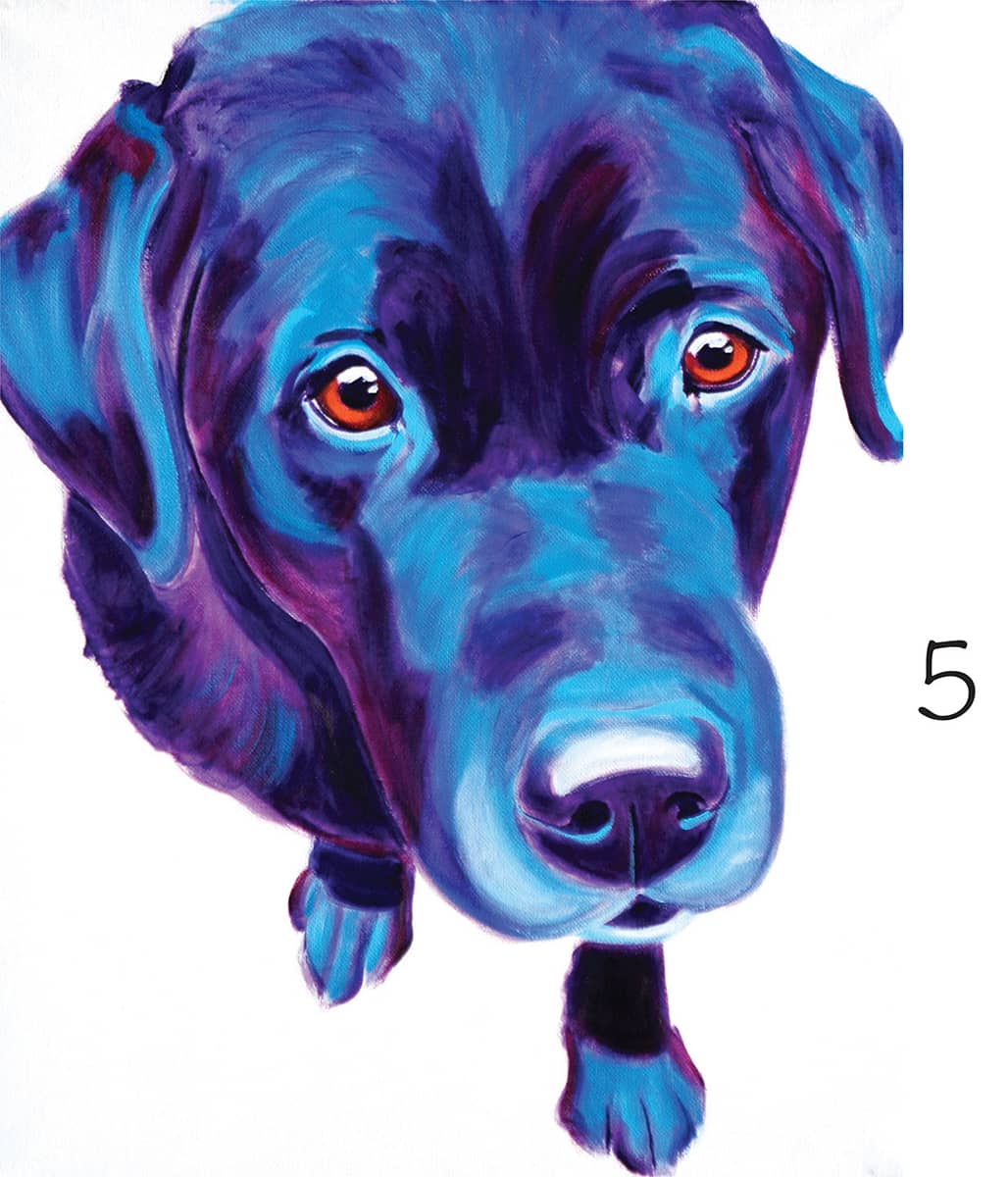
5 Use brilliant blue over the initial glazes to add opacity, and use manganese blue again on the top of the head to add fur texture, leaving the brushstrokes visible. Use light blue to outline and highlight the eyes. Blend strokes on the muzzle to suggest silver hairs around the nose and mouth.
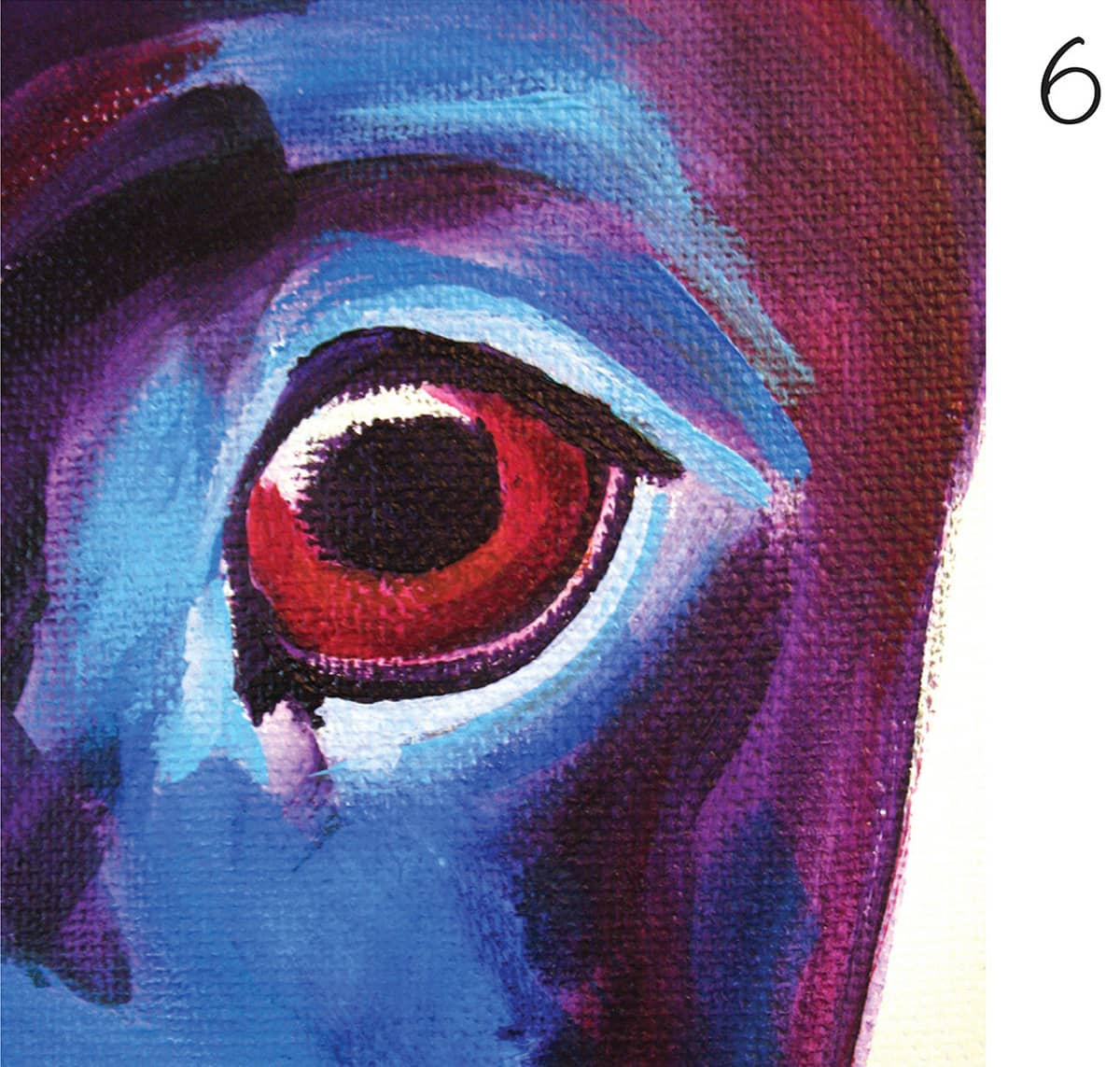
6 Over the irises, cover the initial quinacridone violet with burnt sienna. Add another glaze of quinacridone violet for dimension.
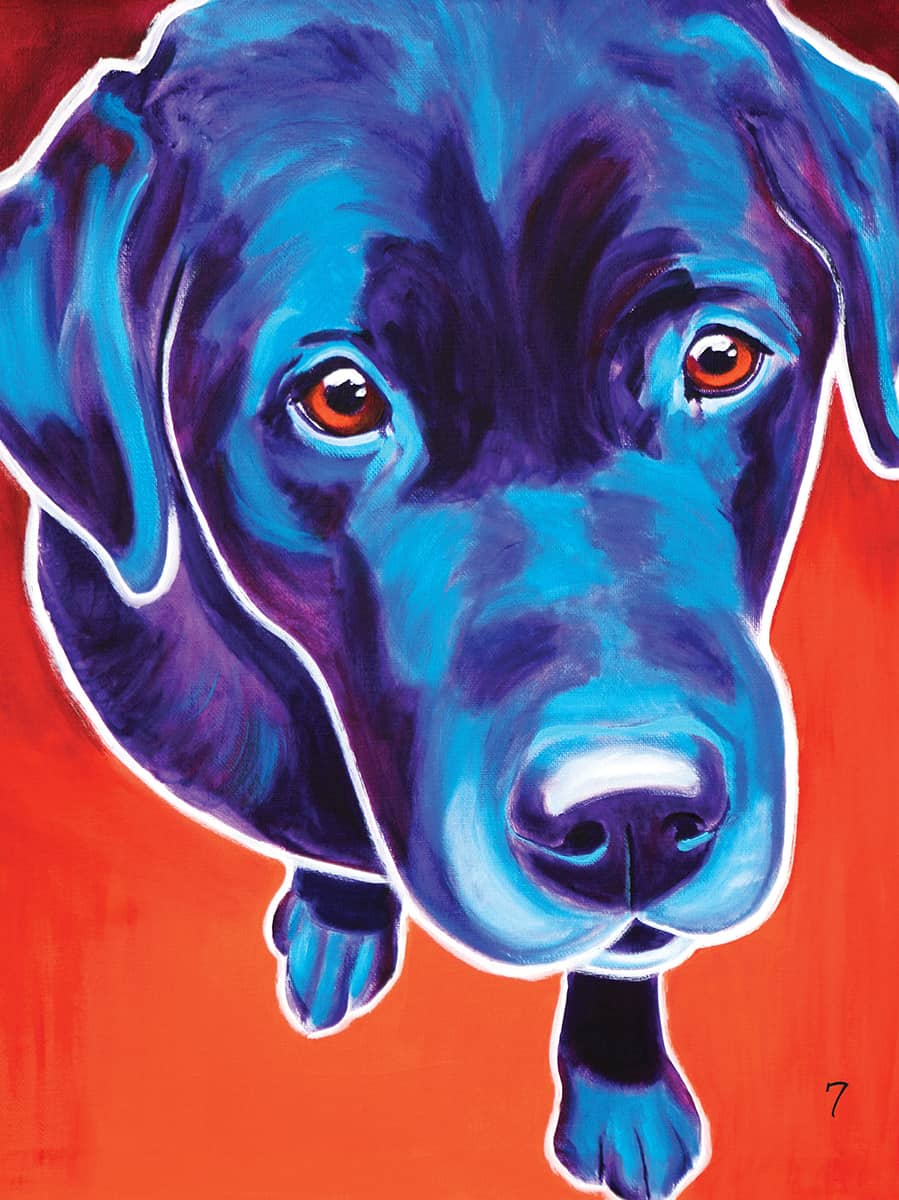
7 Add cadmium orange as a lighter value on the irises to make the eyes “pop” against the cool colors of the face. Add a warm background to contrast, blending quinacridone violet from the top of the canvas into cadmium orange toward the bottom. Add a titanium white outline around Olive to smooth the edges, as well as add visual interest.
Llewellin Setter
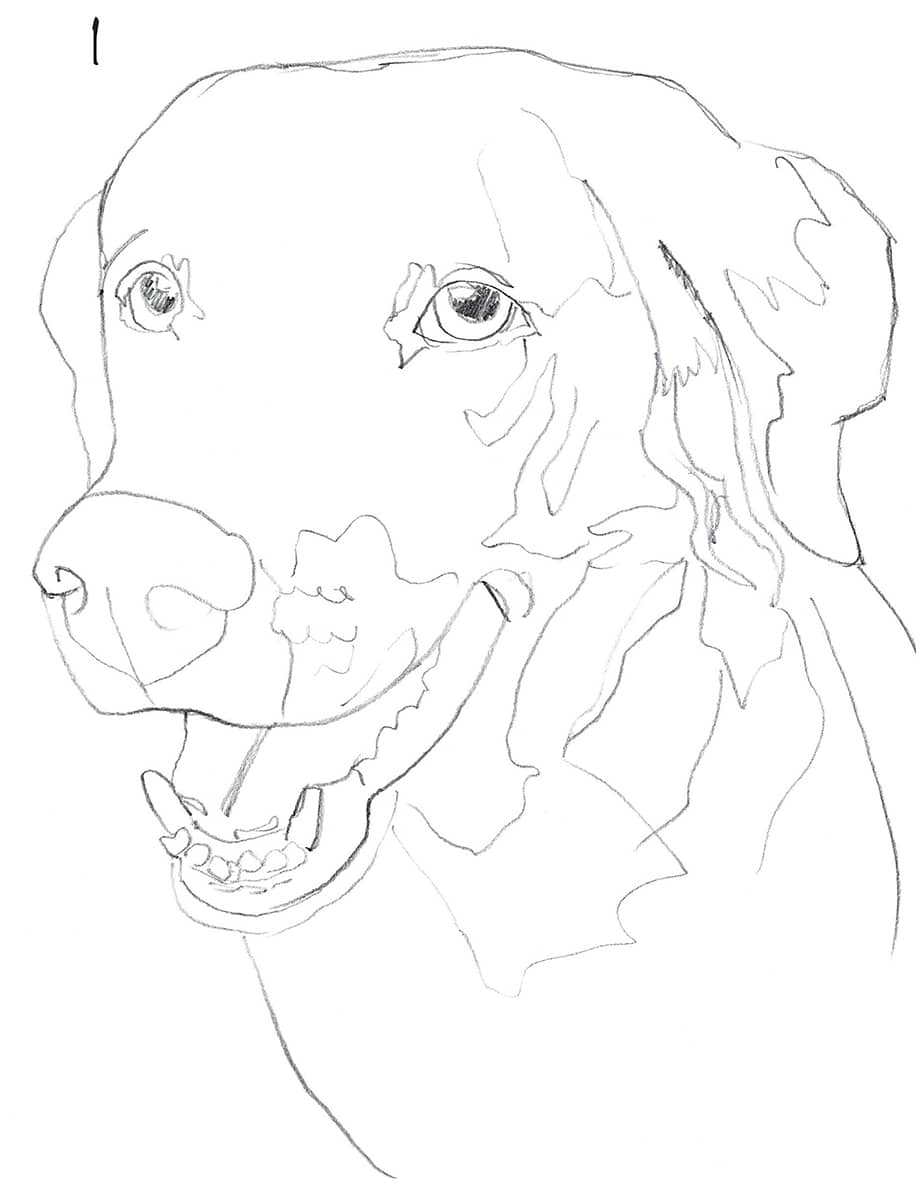
1 Start with a portrait sketched onto the canvas.
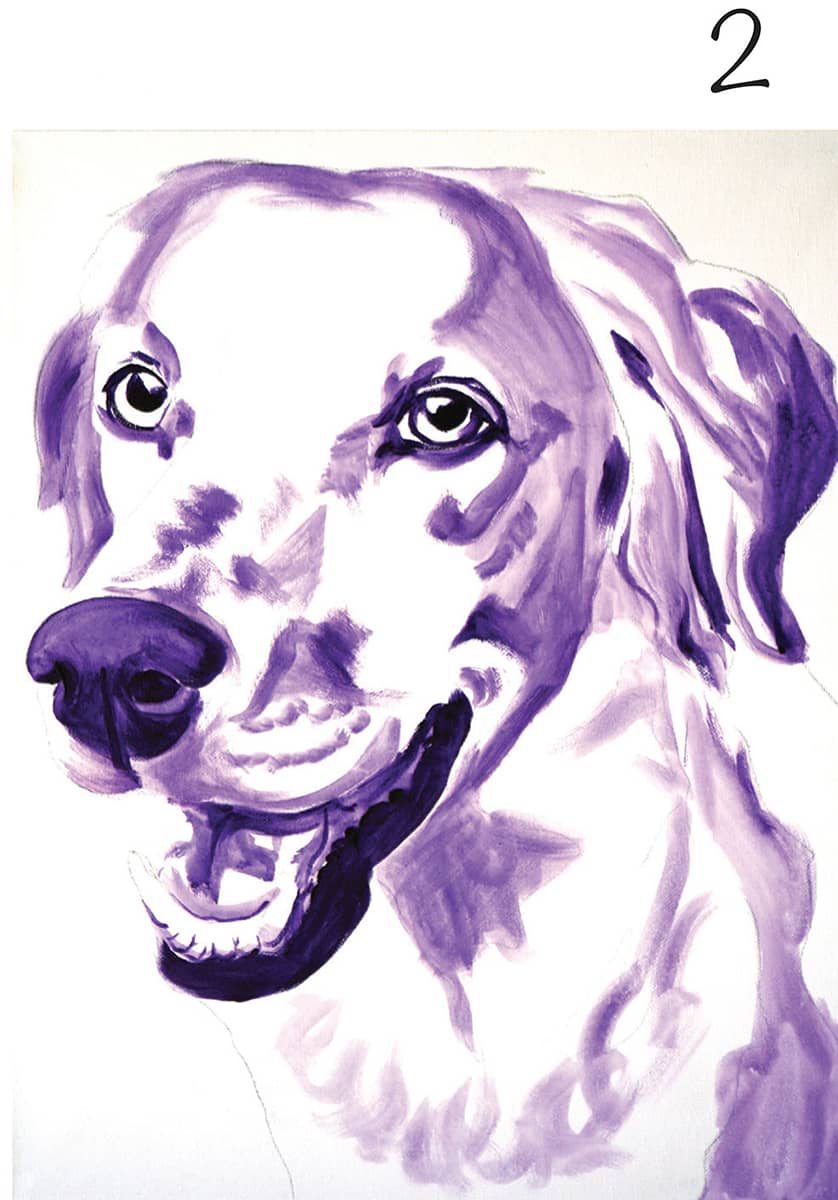
2 Block in the darkest darks with dioxazine purple. Thin the paint for the mid-value shadows by applying paint to the brush and then dipping it into water, making sure to catch any drips. For darker purples, use straight paint on a lightly moistened brush.

3 Work on the next lightest darks with quinacridone violet, specifically on the nose. Lay in some reds in the tongue and on the ears and face. Finally, lay in some value to start the irises.
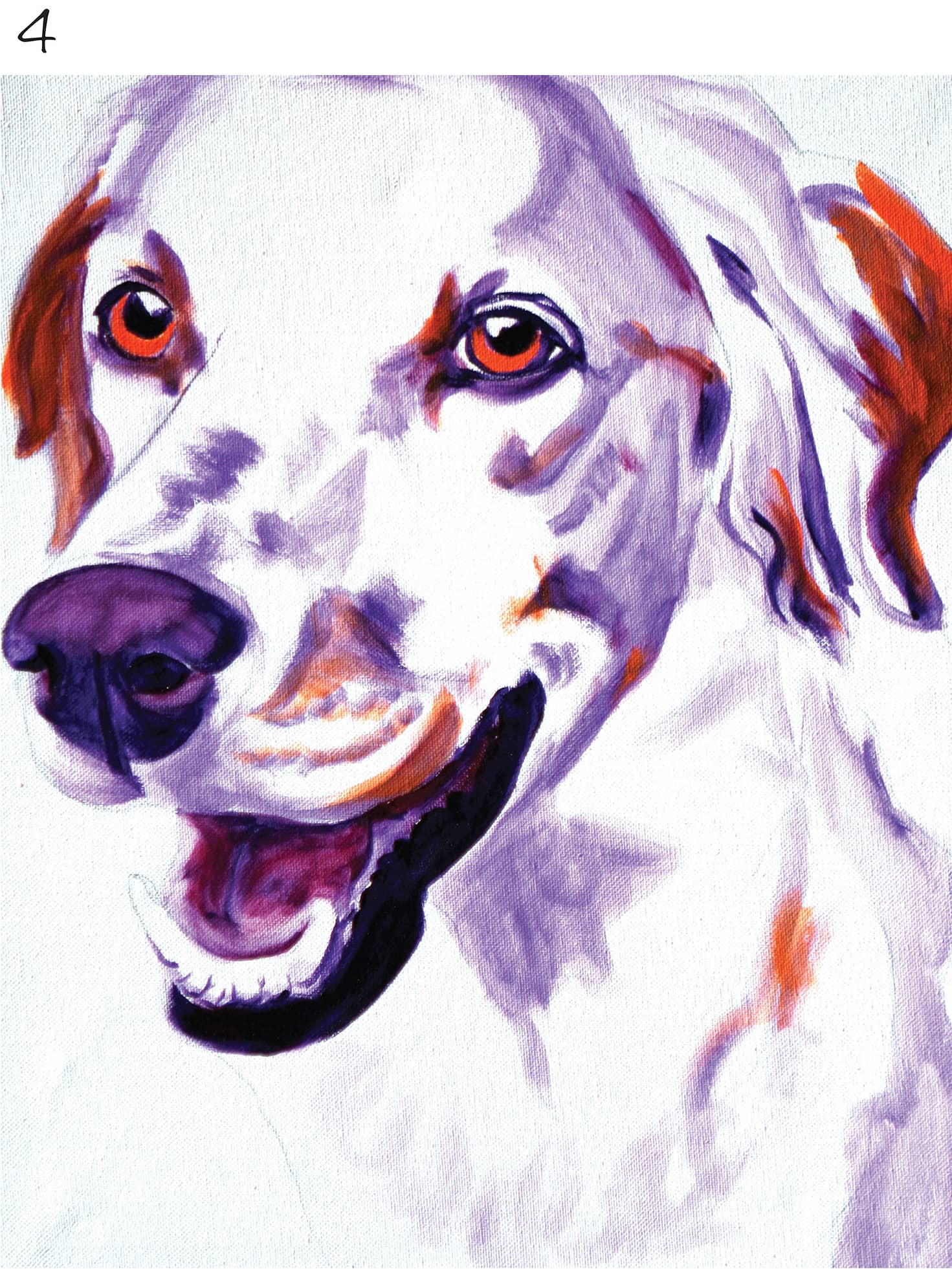
4 Use cadmium orange to block in the orange patches on the face, as well as bright on the eyes.
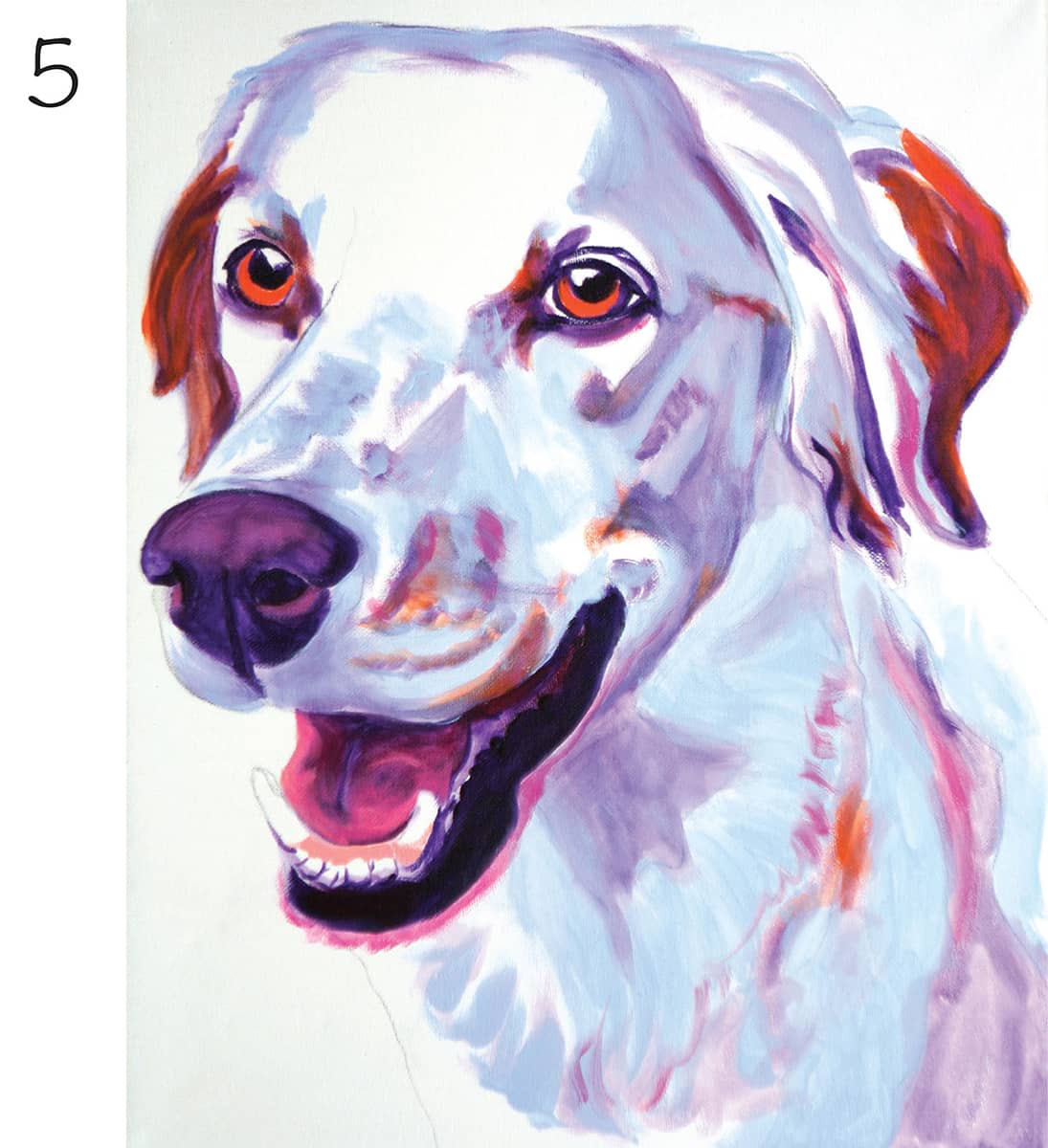
5 To delineate shadows, go over the purple with a thinner, translucent light blue, creating a glaze that lets the color underneath show through. Use thicker paint where needed, creating a range of midtone values for the shadows. Apply light portrait pink to block out the gums and the tongue. Using light magenta, glaze over the light portrait pink on the tongue. With thin paint on a dry brush, add accents to the fur on the neck, ear, face, and around the eyes. Once the tongue is dry, darken shadows with thinned dioxazine purple and quinacridone magenta in glazes.
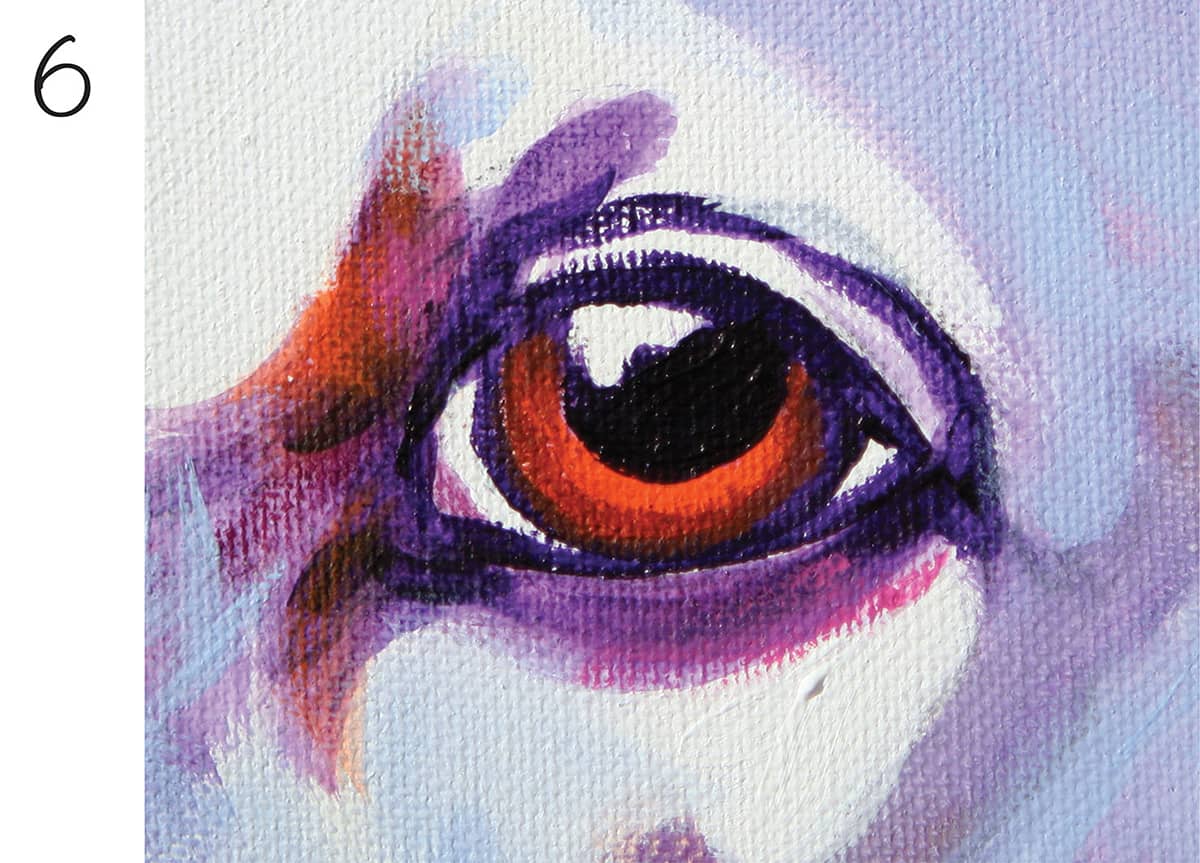
6 Add dimension to the irises with burnt sienna straight from the tube on a dry brush, blending at the edges.
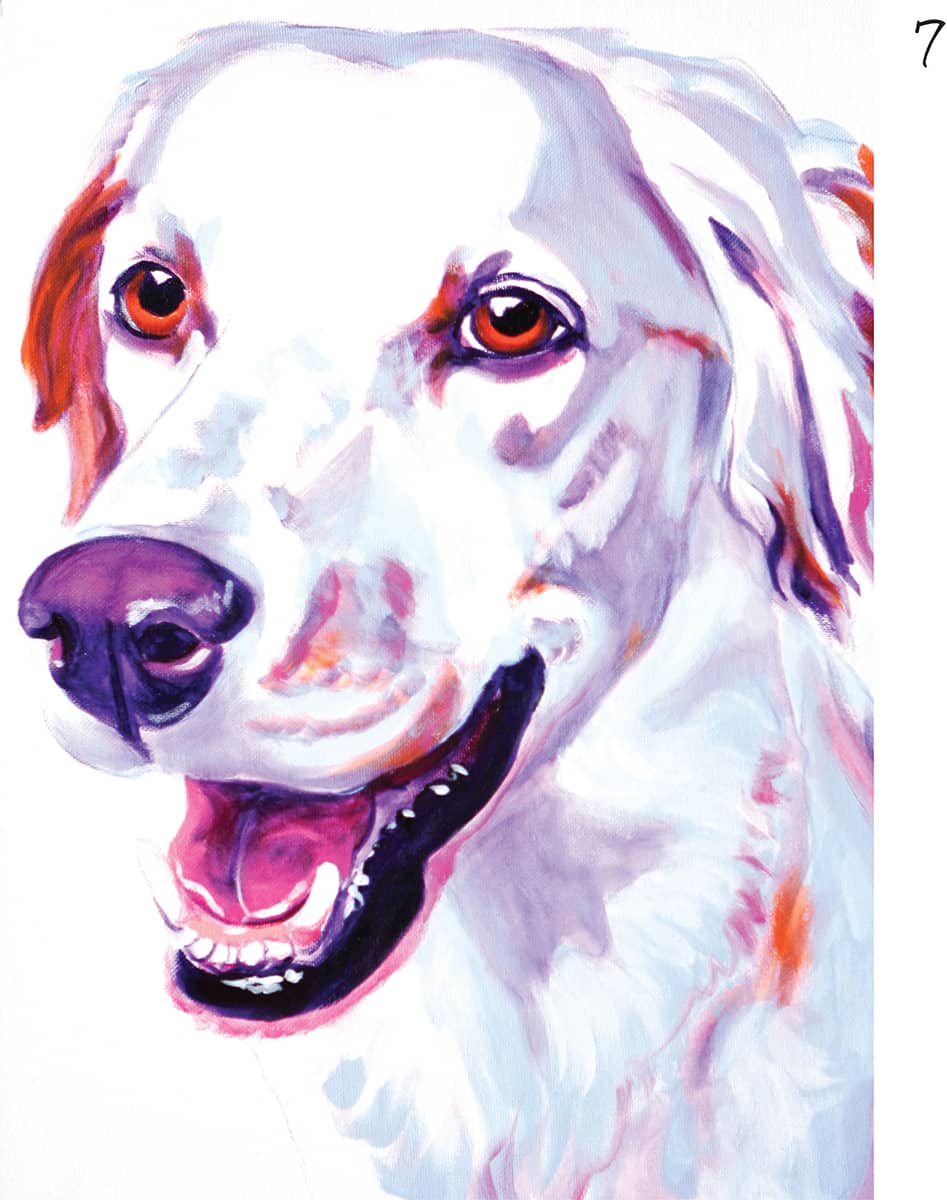
7 Add highlights using titanium white on the tongue, nose, lips, and eyes.
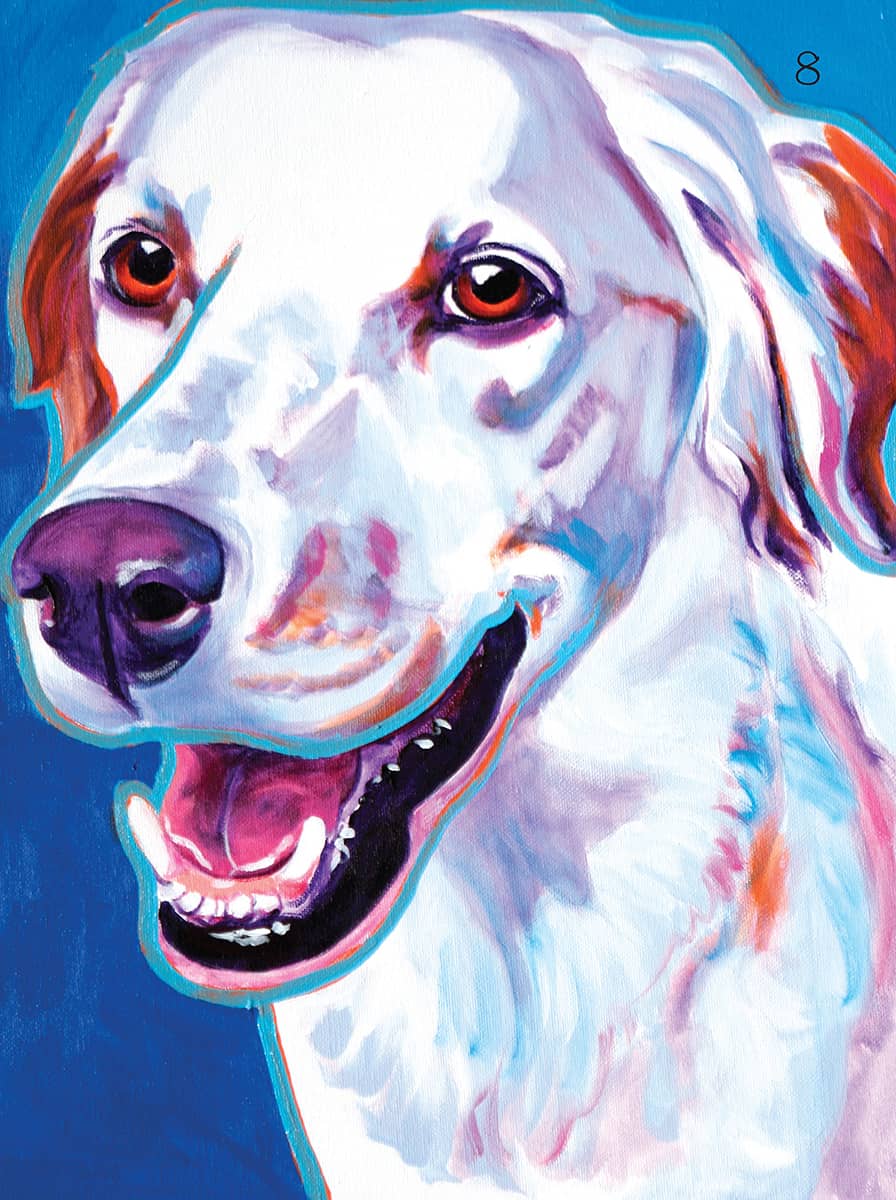
8 Darken the lips, nostrils, and pupils; then brush on a thick background of cerulean blue and brilliant blue with a moistened brush, using darker blue on the bottom and lighter blue at the top.
